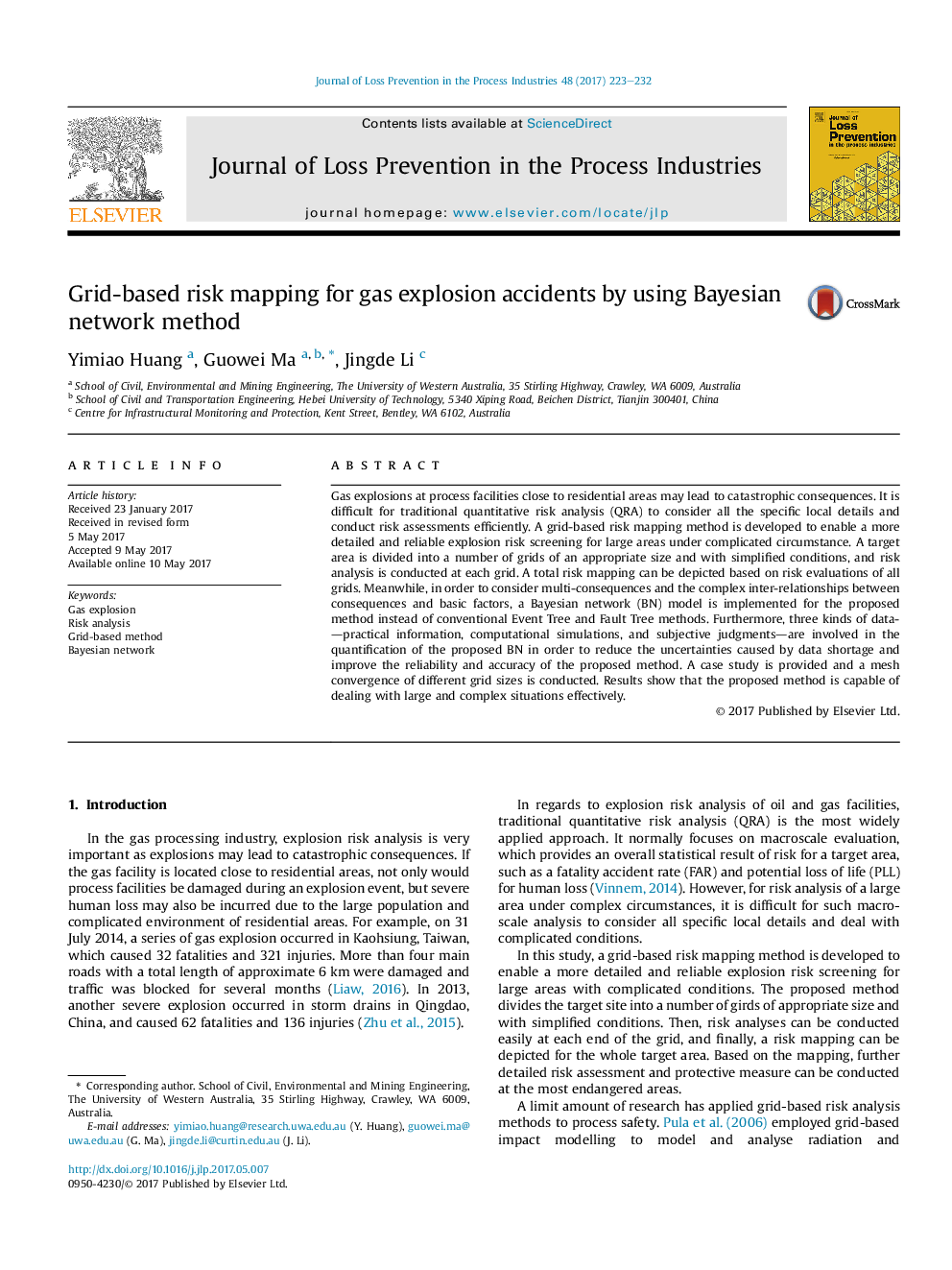| Article ID | Journal | Published Year | Pages | File Type |
|---|---|---|---|---|
| 4980380 | Journal of Loss Prevention in the Process Industries | 2017 | 10 Pages |
Abstract
Gas explosions at process facilities close to residential areas may lead to catastrophic consequences. It is difficult for traditional quantitative risk analysis (QRA) to consider all the specific local details and conduct risk assessments efficiently. A grid-based risk mapping method is developed to enable a more detailed and reliable explosion risk screening for large areas under complicated circumstance. A target area is divided into a number of grids of an appropriate size and with simplified conditions, and risk analysis is conducted at each grid. A total risk mapping can be depicted based on risk evaluations of all grids. Meanwhile, in order to consider multi-consequences and the complex inter-relationships between consequences and basic factors, a Bayesian network (BN) model is implemented for the proposed method instead of conventional Event Tree and Fault Tree methods. Furthermore, three kinds of data-practical information, computational simulations, and subjective judgments-are involved in the quantification of the proposed BN in order to reduce the uncertainties caused by data shortage and improve the reliability and accuracy of the proposed method. A case study is provided and a mesh convergence of different grid sizes is conducted. Results show that the proposed method is capable of dealing with large and complex situations effectively.
Related Topics
Physical Sciences and Engineering
Chemical Engineering
Chemical Health and Safety
Authors
Yimiao Huang, Guowei Ma, Jingde Li,
